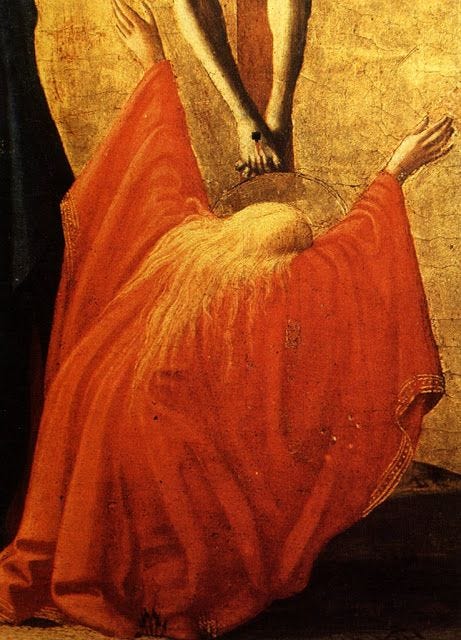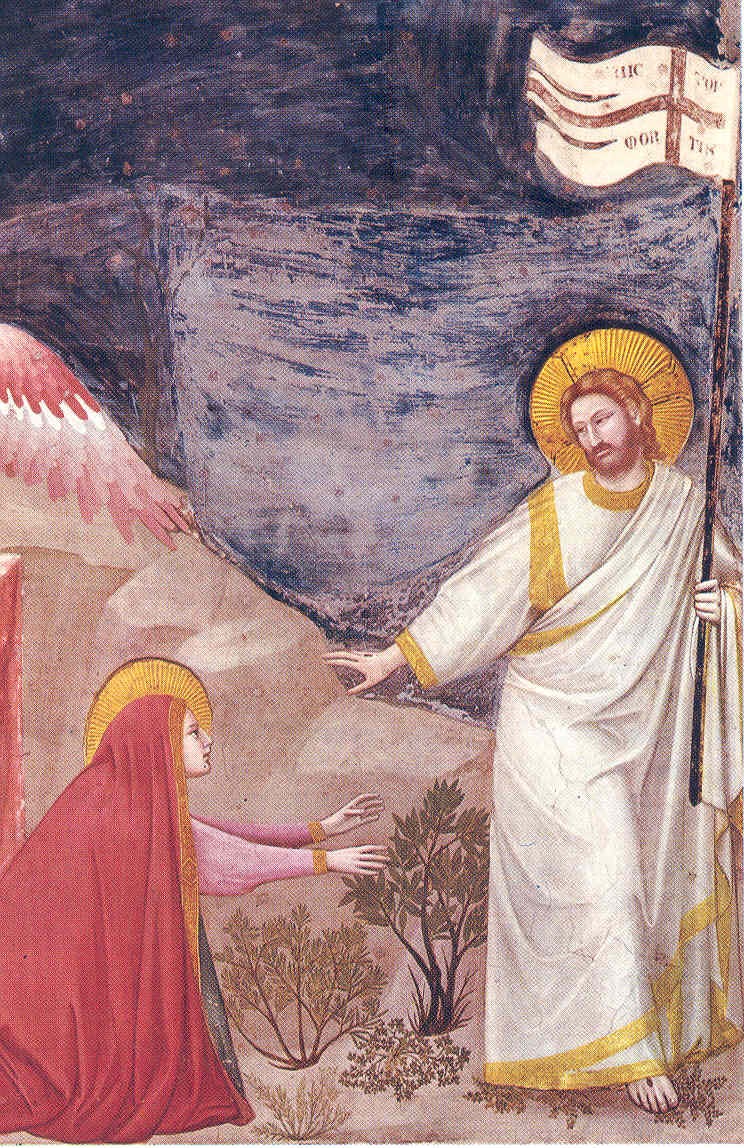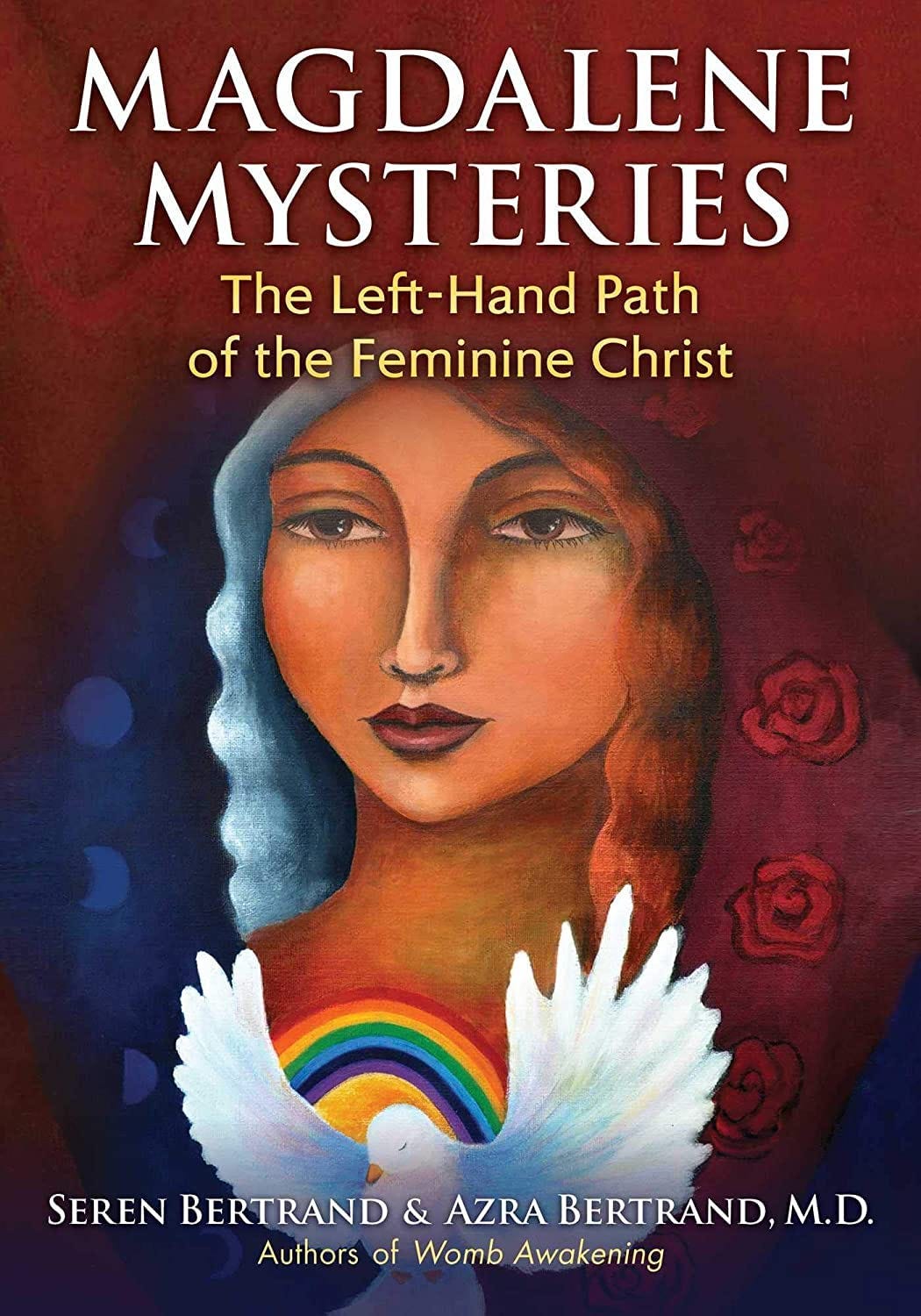Mary Magdalene, Egypt, Ma’at, and Grief Magic
Part 1 of a series looking at the Grief Magic lineages of the ancient Priestesses...
For most of us Mary Magdalene slides into view as a religious figure, maybe a sinner or a repentant, or someone on the outskirts of the magical world of Jesus that would one day sprout like a supernatural psychedelic mushroom into Christianity.
That’s where it often starts. It does not end there. Not even close. You enter that toadstool and things get very weird.
Mary Magdalene, who starts as a bit player, slowly takes center stage as a lead role, a heroine, and finally a goddess.
This journey opens a million fairy doors all at once, into worlds you had no business looking inside, leaving you ravished, intrigued, shellshocked and awakened into a feminine mystical thread that spins you into Egypt, Sumeria, and Europe, and far beyond.
Mary Magdalene is like a red-and-white Amanita Grail leading all the way down into the root systems of immense feminine spiritual traditions and lineages that have been lost, obscured, altered, broken, or simply forgotten. These roots are thirsty to grow and bloom again. .
Here are the four keys about MM that I discovered in my own wyrdings into this lost lineage of feminine magic.
Magdalene (the magic doorway) is a Spirit Keeper of:
Womb - rooted into primordial feminine-centric, somatic traditions of body magic
Grief - a guardian of the underworld grief, death, rebirth and resurrection rituals
Plants – a cup-bearer for the oils, potions, elixirs and healing medicines of plants
Wealth – a lady of luxury, whose abundance finances spiritual transformation
In my Feminine Magic School we work with all four of these threads to weave the teachings together.
Today, I want to focus in on the role of Grief Mysteries and tease that thread back into the Egyptian traditions.
It feels deeply important to me that ‘grief’ isn’t dissected into a ‘must do’ for modern trauma healing, added into cultural and medical systems devoid of the spiritual, magical and mythical layers, that are often located into the pre-historic traditions of feminine wisdom. Grief and Death/Rebirth Rites are mystical feminine spiritual arts.
Mary Magdalene was a Priestess of Initiation & Death Rites
One of the most prominent roles of Mary Magdalene (and the other Marys) is to bear witness to, grieve, lament and be present for the resurrection of Jesus in his death/rebirth rites. If you pilgrimage to the cave of St Baume in France, you will be greeted by the striking sculptural scene of Jesus on the cross and Mother Mary and Mary Magdalene by either side lamenting him in his suffering and death/rebirth.
These vignettes are pervasive in the religion that emerged as Chrisianity, but point to a deeper, wilder, feminine root of mystical practice.
Indeed, it lands us right into the lap of the Priestesses of the old feminine magic traditions, known for their rituals of lamentation, and magical funerary rites. Priestesses were not constrained by the patriarchal traditions of the time. They were known for sensual anointing rituals that gave a man his kingship, or they anointed those who were about to die or receive spiritual initiation. They presided over grief rituals and funerary rites with weeping and lamentation and were known for their exuberant displays of love and affection and sorrow.
This appears to perfectly describe Magdalene’s essence . . .
· She anoints Jesus for his death (or spiritual rebirth into kingship)
· She (alongside other Marys) attends Jesus’s tomb for his funerary rites
· She breaks cultural conventions and is feared by some male disciples
· She is often described as weeping or lamenting, as in the Rites of Isis
Keen of the Mary’s: Magdalene and the Mary’s ‘grief’ and lament
In medieval times when worship of the Mary’s was prolific, her role as a Keening Woman was clear. In Meditations, it is the house of Mary Magdalene that the Marys gather in during Christ’s flagellation, where they grieve with terrible lamentation and crying. Magdalene researcher and author Susan Haskins writes, “According to some medieval writers Magdalene even attended Christ’s trial.”
In other accounts, Magdalene helps protect Mother Mary from her grief. In a thirteenth-century Italian hymn by Jacopone da Todi, “Crucifixion,” the Virgin Mary sings to Magdalene: “Help me Magdalene; grief overwhelms me; Christ my son is being led away as has been told to me.”
From one lens we are peering into a deeply personal moment of women grieving their son, their husband, their brother. But we can put our ‘rose’ tinted glasses on and see something more archetypal and magical. These mourning rites are part of Egyptian and Sumerian tradition, dating back for thousands of years, which encode not only fertility and land renewal rites, but deeper mystical and multidimensional knowledge about the power of prayer, sound, plants, healing, spiritual transference, and maps of the afterworld. These same rites are found in Ireland, in the old Elven/Faery faith.
The Resurrection as a Funeral/Death Rebirth Rite
In many ways the Crucifixion/Resurrection can be seen as a retelling of the epic funeral rites and rituals enacted every year in Egypt by the Priestesses of Isis, where they mourned and lamented the dying God Osiris. It is through the mystery of ritual grief he is resurrected.
Many texts support the idea that both Jesus and Mother Mary studied in Egypt, and could have brought these traditions into their own teachings, which became the Christian tradition. There are many crucial ways that death and grief rites embedded into Christianity, but without the correct context or the deeper mystical layers of psychospiritual and somatic initiation that create ‘shamans’ of true living resurrection.
The Crucifixion According to the Gospels:
The Gospels of Mark, Luke, and Matthew describe the crucifixion in a way that is classified as synoptic—meaning that all three accounts agree on these facts:
Mary Magdalene:
* Stands at the foot of the cross and witnesses the crucifixion
* Goes to the tomb with unguents and spices to anoint Jesus’s body
* Discovers the tomb empty and then meets the resurrected Christ
* Is told by Jesus to go to the other disciples and tell them the good news
The Gospel of John offers a more extensive account of the resurrection, which differs in these details:
* Early in the morning Magdalene discovers Jesus’s body is missing
* She runs to tell Simon Peter and another disciple what has happened
* Peter and the other disciples run to the empty tomb to see for themselves
* The men head back home and Magdalene stays grief stricken by the tomb
* As she stands there, two angels appear to her and ask why she is weeping
* As she explains, she turns around and sees a man standing there
* She mistakes him for “the gardener” and asks if he knows where the body is
* The man then calls her by her name, “Mary,” and she realizes it is Jesus
Next comes the famous scene where she is told not to touch him (noli me tangere).
Magdalene now reaches to touch him, and he says, “Don’t seek to hold or cling onto me—I am not yet ascended to the Father.” The word for “father,” Abwoon in Aramaic, also translates as “Great Birther.” His rebirth is not yet complete he tells Magdalene.
Rites of Isis: The Lady of Sorrows and Lamentation
One of the mystical signatures of the Crucifixion and Resurrection is the role of grieving and lamentation, a core practice of the feminine mysteries, which were famed for the redemptive and initiatory depth of their grief rituals.
The grief rituals of Isis were particularly renowned for the intensity of their emotional outpouring, as priestesses of Isis mirrored the goddess Isis as she mourned and searched for her lost husband, Osiris, the sacred masculine, in order to rebirth him. Priestesses would walk in procession lamenting and sobbing for the beloved, the salty mystery of their tears flowing from the womb of their souls. They would loosen their hair, tear at their clothes, and bang drums and rattle sistrums as they made processions through the streets.
This motif of the feminine grief ritual in the role of the resurrection of the male god was taken up in medieval times, where Magdalene’s grief was mystically enacted. St. Anselm of Canterbury (1033–1109) wrote an emotional prayer-poem about Magdalene and Christ for Adelaide, the younger daughter of William the Conqueror.
Saint Mary Magdalen, you who came with a fount of tears to Christ. . . . How should I tell of you, burning with love of him, wept for him at seeking at his tomb, and sought him whilst weeping? How kindly, and in what friendly way, he inflamed you, whom he came to console . . . O wonderful devotion! . . . She was not able to prevent them from killing you; and she wished to preserve your body with unguents for a long time.
In some medieval depictions Magdalene is pictured at the base of the cross at Golgotha, wearing a red cloak (symbolic of the female witch-shaman and womb priestess), catching Christ’s blood in a skull and bones, with her hair long and loose, entwined round his feet, alluding to the anointing. Her cloak is described as blazing with the “fire of love” as she embodies deep feminine sorrow, and the weeping lover—becoming a symbolic Isis.
In the mystery plays of medieval times, the Easter death and resurrection were a key theme. They presented the three Marys—Magdalene, Salome, and Jacoby— bearing ointment jars, known as alabastrons, walking in procession to the sepulcher. When they arrive at the empty tomb, Magdalene takes center stage with her lamentations.
In the Tours manuscript, we read that as Magdalene faints in grief, “Then Mary Jacoby comes who takes her right arm and Mary Salome takes her left, and they lift her from the ground, saying to her, ‘Dear sister, there is too much sorrow in your soul.’”
Aramaic Wisdom of the Earth
In a somatic sense grief tells us to let go, soften, open to the flow, return to earth. This is an inner softening, a liquidity, an earthing. It allows all stuck emotions to soften, flow, and pass through your system, in trust and deep surrender.
This emotional softening and release allows us to connect with the power of earth, of being humble, grounded, rooted, and connected to the vast intelligence of life.
Often grief can bring us into this state of humility and a softening into love, which is the natural state of our body. When we hold on to grief and emotion, it becomes stuck in the body, making us rigid, tense, and hard—the opposite of surrender. This is why grief rituals and lamenting were so important in the feminine priestess traditions, as this connection to and expression of grief allowed flow and softness and renewal.
In ancient traditions Grief had a heavenly or celestial aspect and a terrestrial or underworld womb aspect, creating a mystical circle of life/death/rebirth, and a perfect synergy for us to release, let go, and be ensoiled by the womb magic of earth and then to also journey back towards the light, and to recover and renew.
In Egyptian and Sumerian tradition this sacred-dual-synergy was depicted by double-goddesses of sisters of light-darkness.
· Isis and Nephthys
· Ma’at and Ammut
· Inanna and Ereshkigal
And in Celtic tradition
· Cailleach and Bride
· Banshee and Fairy Queen
And later on by….
· Black Madonna (crypt) and Virgin Madonna (altar)
· Mary Magdalene (wisdom) and Virgin Mary (purity)
Let’s begin by looking more closely at the grief and funerary traditions of Isis and Nephthys in Egypt…
To be continued….this is a 3 part series on Mary Magdalene’s Grief Lineages.
Read part 2 of the Grief Mysteries Series here.
Read part 3 of the Grief Mysteries Series here.
Buy the Grief Mysteries instant access downloadable course bundle here.
Read more about Mary Magdalene and her lineage in Magdalene Mysteries.










Seren, thank you for this. I love your teachings, they have guided me so much!!
More and more I’ve been leaning into the wisdom of Mary Magdalene also being a water priestess. Curious if you’ve made any connections with that as well.
Omg I have been moving through a huge grief portal + I knew it was holy. I kept feeling Mary symbolically as I weave through my deep grief, this article couldn’t have found me at a more perfect time. Thank you so much from the bottom of my heart for validating all that I have been feeling in this walk 🙏🏽🌹